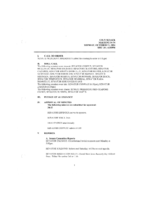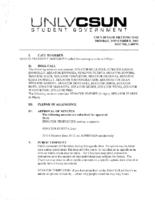Search the Special Collections and Archives Portal
Search Results

Interview with Kenneth Giles, February 10, 2005
Date
2005-02-10
Archival Collection
Description
Narrator affiliation: EPA Farm
Text

Interview with Corbin Harney, with Rosemary Lynch, August 4, 2005
Date
2005-08-04
Archival Collection
Description
Narrator affiliation: Western Shoshone Spiritual Leader; Protester
Text

Interview with Vernon Henry Jones, October 4, 2005
Date
2005-10-04
Archival Collection
Description
Narrator affiliation: Electrical technician, Edgerton, Germeshausen, and Grier (EG&G)
Text

Interview with Elmer Jesse Sowder, April 29, 2004
Date
2004-04-29
Archival Collection
Description
Narrator affiliation: Test Director, Los Alamos National Laboratory
Text

Interview with Elmer Jesse Sowder, June 23, 2004
Date
2004-06-23
Archival Collection
Description
Narrator affiliation: Test Director, Los Alamos National Laboratory
Access note: Audio temporarily sealed
Access note: Audio temporarily sealed
Text

Interview with Ernest Benjamin Williams, October 27, 2004
Date
2004-10-27
Archival Collection
Description
Narrator affiliation: Budget and Logistics, Atomic Energy Commission, U.S. Department of Energy
Text

Interview with Linda (Mack) Smith, June 30, 2004
Date
2004-06-30
Archival Collection
Description
Narrator affiliation: Deputy Manager Nevada Operations Office, U.S. Department of Energy; Nevada Test Site Historical Foundation
Text

Interview with Curtis Rufus Amie Sr., January 21, 2005
Date
2005-01-21
Archival Collection
Description
Narrator affiliation: Miner, Reynolds Electrical and Engineering Company (REECo)
Text

Meeting minutes for Consolidated Student Senate, University of Nevada, Las Vegas, October 11, 2004
Date
2004-10-11
Archival Collection
Description
Includes meeting minutes and agenda.
Text

Meeting minutes for Consolidated Student Senate, University of Nevada, Las Vegas, November 08, 2004
Date
2004-11-08
Archival Collection
Description
Includes meeting minutes and agenda, along with additional information about Code of Conduct.
Text
Pagination
Refine my results
Content Type
Creator or Contributor
Subject
Archival Collection
Digital Project
Resource Type
Year
Material Type
Place
Language
Records Classification
